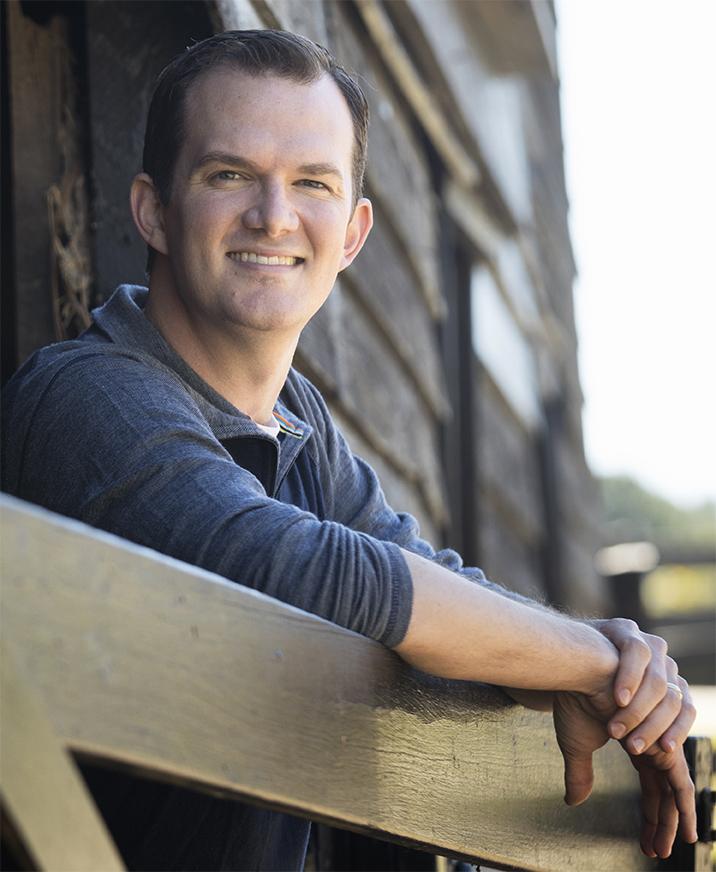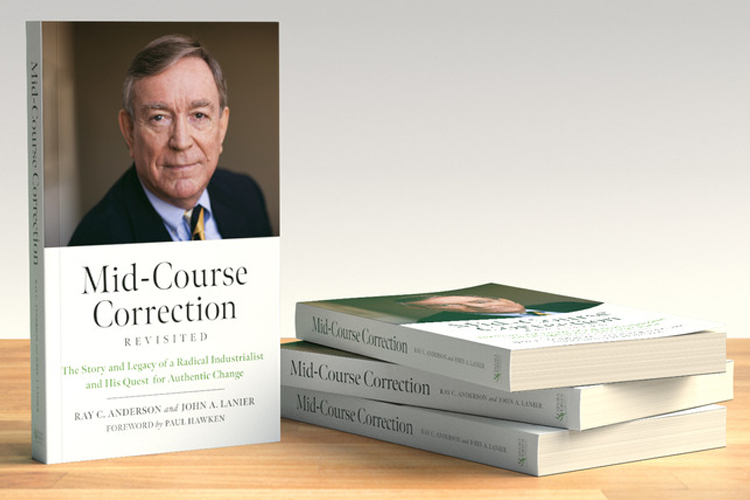Mid-Course Correction Revisited - Profitable & Sustainable Business
The updated book by Ray Anderson's Grandson John Lanier with foreword by Paul Hawken
Mid-Course Correction Revisited
by John Lanier, author and grandson of Ray Anderson
You always remember your first. Book, that is – you always remember your first book. You know, the first one you write. What were you thinking of?
In my case, the first book is also my only book. Whether I go on to write a hundred more or keep authorship in my rearview mirror, Mid-Course Correction Revisited will always be special to me. The reason is simple. It has everything to do with who my co-author was.
Many people just called him “Ray.” Some of his employees stuck to the habit of calling him “Mr. Anderson.” Fortune Magazine called him “America’s greenest CEO.” My mother and aunt were the only two who could call him “Dad.” I am one of five lucky souls who grew up calling him “Daddy Ray.”
His story is legendary. In 1994, in his 60th year of life and having successfully founded and grown Interface into the world’s largest manufacturer of carpet tile, Ray read a book. Paul Hawken’s The Ecology of Commerce showed Ray that his business, and all of the industrial world, were complicit in the destruction of the biosphere. Worse, business and industry were the sector responsible for the greatest amount of environmental degradation. That said, they were also the only sector large enough and well enough organized to fix our challenges.
From that moment on, Ray was committed to a new moral imperative. He sought to make his large, publicly-traded, industrial manufacturing company truly sustainable, and eventually restorative. In the years that followed, he and the people of Interface showed how much was possible when a business authentically pursues environmental sustainability.
In 1998, just a few years into Ray’s sustainability journey, he decided to write Mid-Course Correction. In part, that book looked backward, telling Ray’s personal story as an industrialist-turned-environmentalist. The heart of the book, however, was Ray’s forward-looking vision. With honest and compelling words, Ray imagined that into which he wanted Interface to mature – the prototypical company of the 21st century.
Sadly, my grandfather did not live to see Interface become a fully sustainable enterprise. He passed away in 2011, but his legacy continues on, in part through the work of the Ray C. Anderson Foundation. So too does his vision, which remains just as valid and important as it ever was. We desperately need more companies to follow the Interface model, seeking to become prototypical companies of the 21st century.
For that reason, our foundation decided to update and republish Ray’s first book. His wisdom has withstood two decades of weathering, and we believe that bringing his story to the present day could inspire a new generation of business leaders. In two of the new chapters that I wrote, I explore how far Interface has come since 1998 and exactly why the company became more successful as a result of an authentic commitment to sustainability. These chapters make the business case for sustainability – what Ray called “doing well by doing good.”
From the beginning though, I knew that this book would need to be more than just a second edition trumpeting Interface’s success. For all that is the same, so much more has changed since 1998. I wanted to look around the proverbial corner, just as Ray did 21 years ago.
Read the rest of John's Blog Post on how we need to create prototypical companies and economy for the 21st century, all here - https://greenmoney.com/mid-course-correction-revisited




